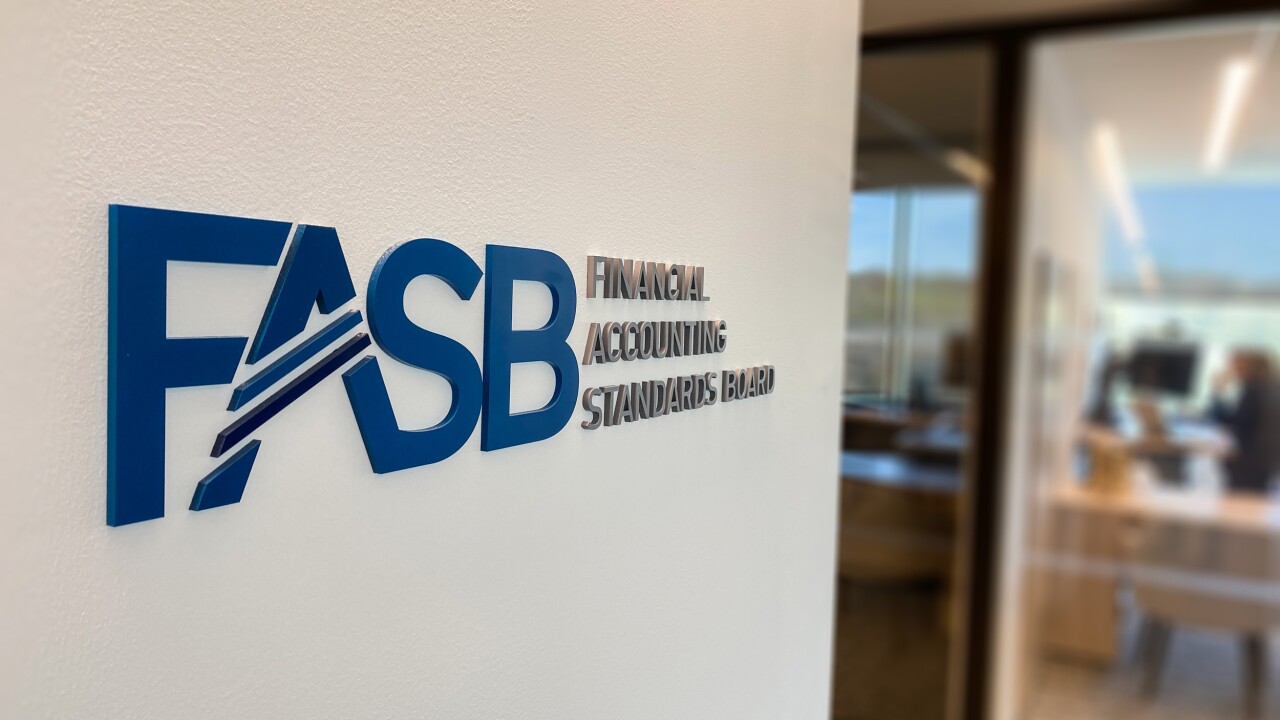With quixotic courage, the Governmental Accounting Standards Board has issued a preliminary views document on one of accounting's most confounding issues - reporting on derivatives.The suggested standard would require governmental financial statements to report derivatives at fair value in the balance sheet, unless the instrument is effectively hedging the risk that it was issued to offset. In such cases, the derivative's fair value would be reported in the balance sheet as either deferred charges or deferred credits, with no effect of fair value changes on the change statement.
"I think GASB is trying its best to find a balance between a desire for appropriate financial disclosure and a goal of not making the disclosure overly burdensome," said Peter Shapiro, a managing director of Swap Financial Group and a member of the GASB task force that helped develop the document. "They've come up with a number of workable ways to category a hedge as effective and allow for a deferral of recognition of any ineffectiveness, and all of that is a positive result. It is way better than what the Financial Accounting Standards Board has done in its Statements 133 and 138."
GASB project manager Randal Finden is pleased with the clarity of the answers that the proposal provides. "For such a complicated statement, you can summarize the whole thing in just a few sentences," he said. "We're going to put them on the balance sheet at fair value, and if fair value changes on the income statement, and it's hedging, then we're going to defer those gains and losses. That summarizes the whole thing."
Finden said that GASB is using the same definitions that FASB used in its statements, and many of the rules are the same. Much of the new reporting would include information that is already disclosed in governmental financial statement footnotes, so the impact on financial markets, he explained, should not be a shock of new information.
The GASB document departs from the FASB statements in a few areas, such as the categorization of what qualifies as a hedge. The GASB document provides much more guidance on hedging activities, reducing ambiguity.
"We were uncomfortable with different practitioners, different preparers and different auditors having different answers for similar transactions," Finden explained. "Part of the board's concern with the proposal is that it can be difficult if you don't know what the right answer is. So we're going to give you the right answer, the specific metrics that you need to meet and answer that very important question: What is an effective hedge?"
Among the more innovative departures from the FASB statement regards accounting for a synthetic interest rate for debt, a practice common among governments. One of the hedging methods allows for balancing the cash flows of a hedged debt at a variable interest rate with a fixed interest rate swap, effectively creating a synthetic interest rate.
Finden described the guidance as very specific, with illustrated examples that detail exactly what metrics were used, what journal entries were made, the consequent financial numbers, and the conclusion on why a given hypothetical transaction did or did not constitute an effective hedge.
Finden added that there are several issues that have not been addressed in the preliminary views, and for that reason the board opted not to issue an actual exposure draft of a proposed statement. In the area of routine sales, for example, the document expresses general concepts and principles, but not specific guidance.
While generally pleased with the proposal, Shapiro is unsure whether the measurement and testing that would be required would be a burden to governmental accountants.
"For sophisticated preparers, my immediate interpretation is that this is stuff they are pretty much doing anyway," Shapiro said. "Many of them already measure, for their own management needs, more than what is required in the footnote. For the less-sophisticated preparer who does one swap here, one there, I have questions about whether this will create some problems. I want to explore it more and hear what people have to say, so the public comment process will be very valuable in getting a feel for that."
GASB is issuing a plain-language supplement. Since the PV document is less than a proposed standard, it gives the board an opportunity for such an editorial supplement that explains not only the answers to accounting problems, but the nature of the problems themselves and why certain alternatives were chosen.
Finden will be touring North America to give seminars and conferences to explain GASB's preliminary position on derivatives. The board will hold a hearing at the annual conference of the Association of Government Accountants in San Diego on June 21, 2006, and a panel discussion in New York on July 10 at a time and place to be determined. Comments are requested by July 28, 2006.
The preliminary views document can be downloaded at www.gasb.org.





